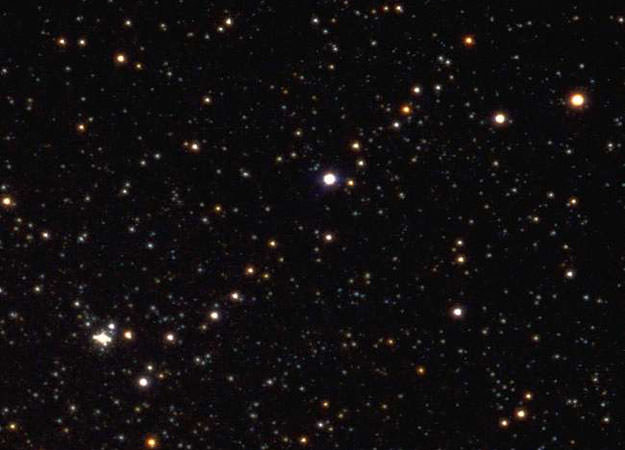[/caption]
The Big Dipper is an asterism (well-known to those who live in the northern hemisphere), so is the False Cross (well-known to those who live in the southern hemisphere). Asterisms are easily recognized pattern of *s*t*a*r*s* (but not a constellation).
The sky is full of asterisms easily seen without a telescope or binoculars: Summer Triangle, Great Square of Pegasus, the W in Cassiopeia, Frying Pan, Orion’s Belt, … it’s a long list.
The Southern Cross is not an asterism, strictly speaking, because it’s a constellation (Crux).
An asterism can take in parts of more than one constellation; for example, the Square of Pegasus has three stars in Pegasus (the three brightest, alpha, beta, and gamma Peg), and one in Andromeda (alpha And).
Some well-known asterisms are visible only through a telescope or binoculars; for example the Coathanger, and Kemble’s Cascade.
A couple (at least) of open clusters are also asterisms – the Hyades and the Pleiades (also known as the Seven Sisters).
Some clear, fixed features in the night sky, with well-known names, are not asterisms or constellations … the Coalsack for example, is a dark cloud in the plane of the Milky Way which blocks its light, and the Magellanic Clouds are dwarf, satellite galaxies of our own.
As astronomy in many cultures developed independently of the West (ancient Greece, Rome, etc), many of the commonly recognized constellations in those cultures correspond to asterisms … see if you can recognize some of the Chinese ones!
A particularly interesting kind of constellation is the dark constellation; instead of joining up bright stars to make an easily recognized figure, some cultures linked various dark nebulae in the Milky Way; for example the Emu in the Sky of the Australian Aborigines (and no, these are not asterisms).
SEDS (Students for the Exploration and Development of Space) has a concise list of asterisms easily visible without binoculars, or a telescope (though you may have to go to the opposite hemisphere to see them all!).
Asterisms are mentioned in many of Universe Today’s Weekend SkyWatcher’s Forecasts (August 21-23, 2009, for example), in its articles on Constellations (e.g. Orion), and Kids Astronomy ones (e.g. Finding the Summer Triangle).

